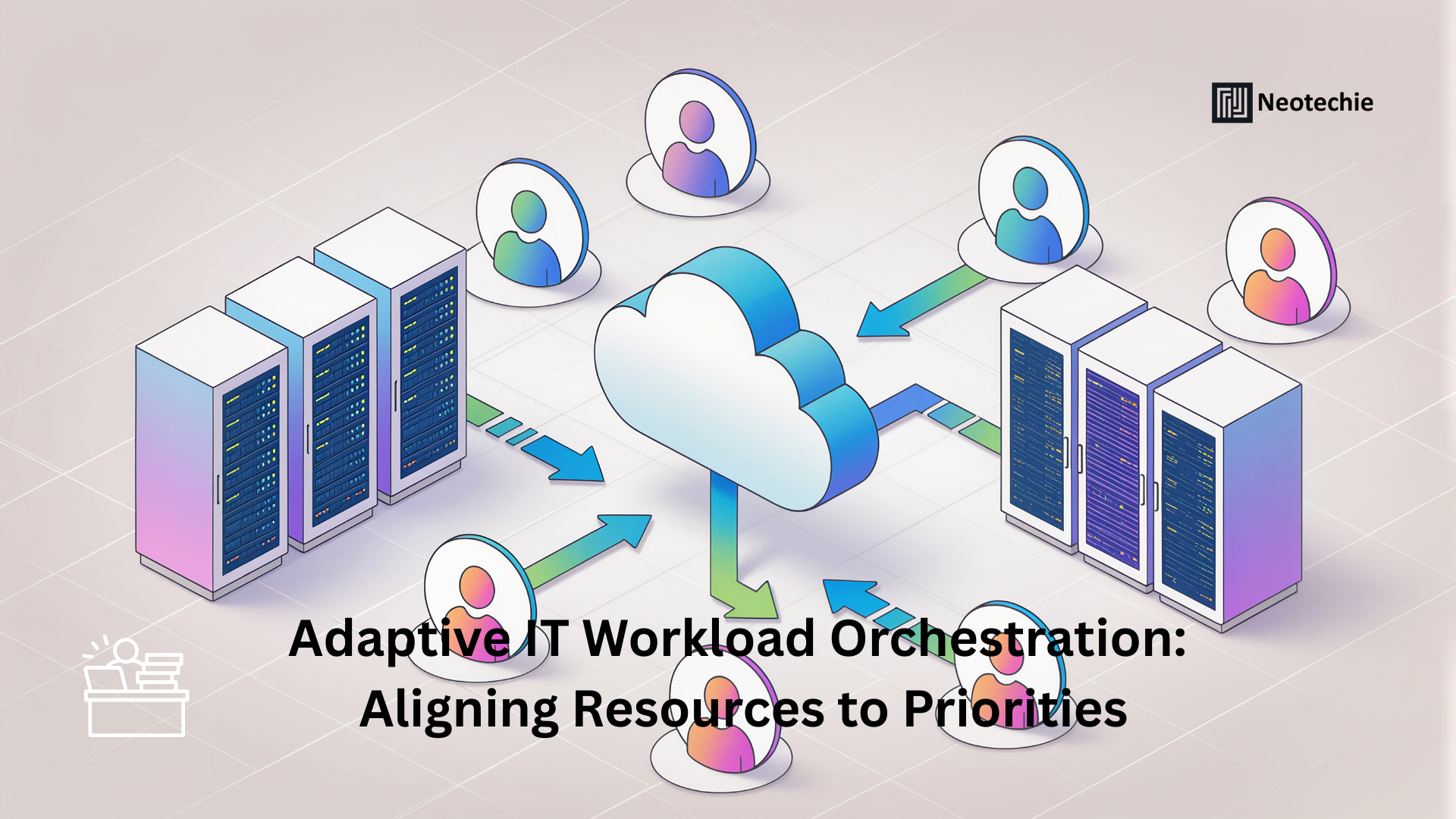Adaptive IT Workload Orchestration — Dynamically Aligning Resources to Business Priorities
Redefining IT Efficiency Through Adaptive Workload Orchestration
Business operations are increasingly dynamic, with IT workloads constantly fluctuating due to seasonal demands, unexpected spikes, or shifting priorities. Static allocation of compute, storage, and network resources often results in underutilized capacity, performance bottlenecks, and unnecessary costs. Adaptive IT workload orchestration uses intelligent automation and real-time analytics to align resources dynamically with business priorities, ensuring efficiency, scalability, and operational agility.
Implementing adaptive workload orchestration is more than a technical upgrade—it is a strategic lever for business transformation, optimizing IT performance while accelerating service delivery and supporting organizational growth.
What Adaptive IT Workload Orchestration Brings to IT Operations
- Dynamic Resource Allocation
- What: Workloads are continuously analyzed and resources are adjusted in real-time based on utilization, priority, and business goals.
- Why: Fixed resource allocation leads to over-provisioning or underutilization, increasing costs and limiting agility.
- How: AI-driven orchestration platforms monitor CPU, memory, and network demands, scaling workloads up or down automatically. For example, during high e-commerce traffic, compute resources are reallocated to ensure smooth transaction processing, optimizing both performance and operational costs.
- Intelligent Workload Prioritization
- What: Business-critical workloads receive precedence over lower-priority tasks based on real-time business policies.
- Why: Not all processes carry the same business impact; prioritizing resources ensures critical services maintain performance under pressure.
- How: Orchestration tools evaluate workload dependencies, deadlines, and SLAs, automatically prioritizing tasks. For instance, a financial reporting system receives priority compute allocation during month-end close, ensuring timely and accurate deliverables.
- Enhanced Operational Agility
- What: IT systems can adapt instantly to changing conditions without manual intervention.
- Why: Manual reallocation of resources is slow, error-prone, and can disrupt business processes.
- How: Automation and AI continuously monitor workloads and redistribute resources. For example, a cloud-based application can shift resources between regions in response to localized demand spikes, maintaining consistent service quality globally.
- Predictive Scaling and Demand Forecasting
- What: Future workload trends are predicted using historical data and analytics to proactively allocate resources.
- Why: Reactive adjustments can lead to latency or downtime during unexpected peaks.
- How: Machine learning models analyze historical traffic patterns, seasonal trends, and business events to forecast demand. For example, a retail platform anticipates holiday season surges and pre-scales infrastructure, preventing outages and ensuring seamless customer experiences.
- Optimized Cost and Resource Utilization
- What: Resources are allocated efficiently, reducing waste and minimizing unnecessary expenditure.
- Why: Over-provisioned infrastructure increases operational costs and energy consumption.
- How: Real-time monitoring ensures workloads consume only what is needed, scaling down idle resources automatically. This not only saves costs but also contributes to sustainable and responsible IT operations.
Why Adaptive IT Workload Orchestration Matters for Businesses
- Efficiency and Cost Savings: Optimizes infrastructure utilization, reducing waste and operational costs.
- Performance Consistency: Ensures critical applications run smoothly under varying loads.
- Agility and Flexibility: IT can respond instantly to changing business demands.
- Predictive Insights: Data-driven forecasting helps in planning infrastructure and capacity efficiently.
- Sustainability: Reduces energy consumption and environmental impact through optimized resource usage.
Driving Business Transformation Through Adaptive IT Workload Orchestration
- Accelerated Digital Initiatives: Businesses can deploy new applications or scale existing ones rapidly, staying ahead of market demands.
- Operational Resilience: Dynamic orchestration mitigates the risk of system overload, downtime, or service degradation.
- Strategic Resource Management: Predictive and real-time resource allocation aligns IT spend with business priorities.
- Enhanced Customer Experience: Critical applications perform consistently, ensuring user satisfaction and trust.
- Data-Driven Decision Making: Analytics from orchestration platforms guide IT strategy, capacity planning, and business operations.
How Neotechie Can Help
At Neotechie, we empower organizations to implement adaptive IT workload orchestration for maximum business impact:
- Deploy AI-driven orchestration platforms for dynamic, real-time resource allocation.
- Integrate predictive analytics and demand forecasting to proactively manage workloads.
- Implement intelligent prioritization and automated scaling to optimize critical operations.
- Monitor resource utilization and costs continuously, enabling sustainable IT practices.
- Provide consulting, implementation, and support to align IT orchestration with strategic business objectives.
Adaptive IT workload orchestration transforms IT operations from reactive and static to dynamic, intelligent, and aligned with business priorities. Neotechie helps enterprises harness this capability to drive efficiency, resilience, and strategic growth. 🌟

